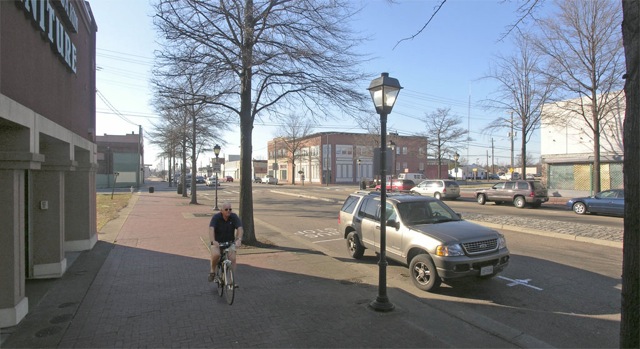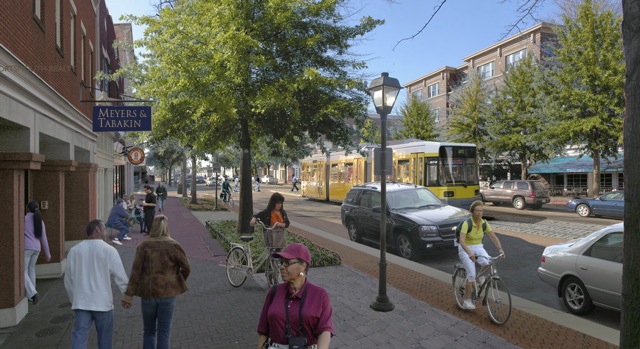
Urban Advisors worked with Dover Kohl & Partners and H3 Studio on a redevelopment plan that balances the interests of the community, property owners, developers and the County. Since the opening of the mall on the outer fringe of the St. Louis metro area in 1973, the shopping center has been declining. The neighbors were left feeling abandoned and underserved, making this revitalization project a priority for the County. Urban Advisors explained the underlying causes of decline, and determined a feasible development strategy to create a walkable environment with a mix of land uses that provides on-site support for the desired local retail services. The plan envisions a community that provides opportunities for families to live in a walkable village, close to shops and employment, and sets a vision for a high quality of design and construction. At the conclusion of the process, the County was actively engaged with the land owners and the adopted plan won the Outstanding Planning Award from the Missouri Chapter of the American Planning Association.




 Working with TND Planning Group and Seth Harry & Associates, Urban Advisors provided market and economic impact analysis for the Highlandtown-Greektown Transit Oriented Development charrette and plan. The goal of this analysis was to determine how the public investment of the planned Red Line light rail stop could help revive a traditional commercial corridor. Our analysis coordinated with the station area design and public improvements to describe how the transit stop was positioned to capture new development of working class professionals and new employment uses that would help support the corridor. With an existing retail base, highway access, an adjacent Johns Hopkins medical campus, large and underutilized sites, and a planned light rail stop, the location has the potential to be an economic engine for the City as well as revitalize the neighborhood. Our conclusions outlined goals and requirements for successful redevelopment and strategies for improving business conditions and support for the corridor. The impact analysis quantifying the potential redevelopment value is now a tool for the community to use in advocating for the implementation of the plan and funding for the Light Rail.
Working with TND Planning Group and Seth Harry & Associates, Urban Advisors provided market and economic impact analysis for the Highlandtown-Greektown Transit Oriented Development charrette and plan. The goal of this analysis was to determine how the public investment of the planned Red Line light rail stop could help revive a traditional commercial corridor. Our analysis coordinated with the station area design and public improvements to describe how the transit stop was positioned to capture new development of working class professionals and new employment uses that would help support the corridor. With an existing retail base, highway access, an adjacent Johns Hopkins medical campus, large and underutilized sites, and a planned light rail stop, the location has the potential to be an economic engine for the City as well as revitalize the neighborhood. Our conclusions outlined goals and requirements for successful redevelopment and strategies for improving business conditions and support for the corridor. The impact analysis quantifying the potential redevelopment value is now a tool for the community to use in advocating for the implementation of the plan and funding for the Light Rail.





